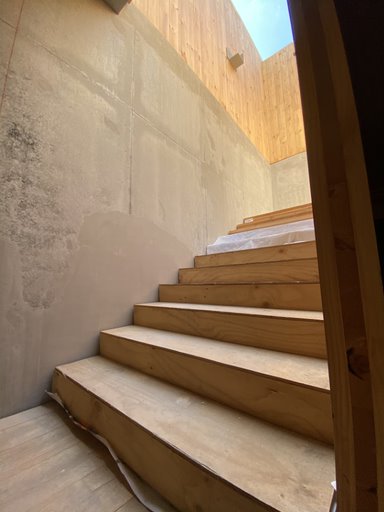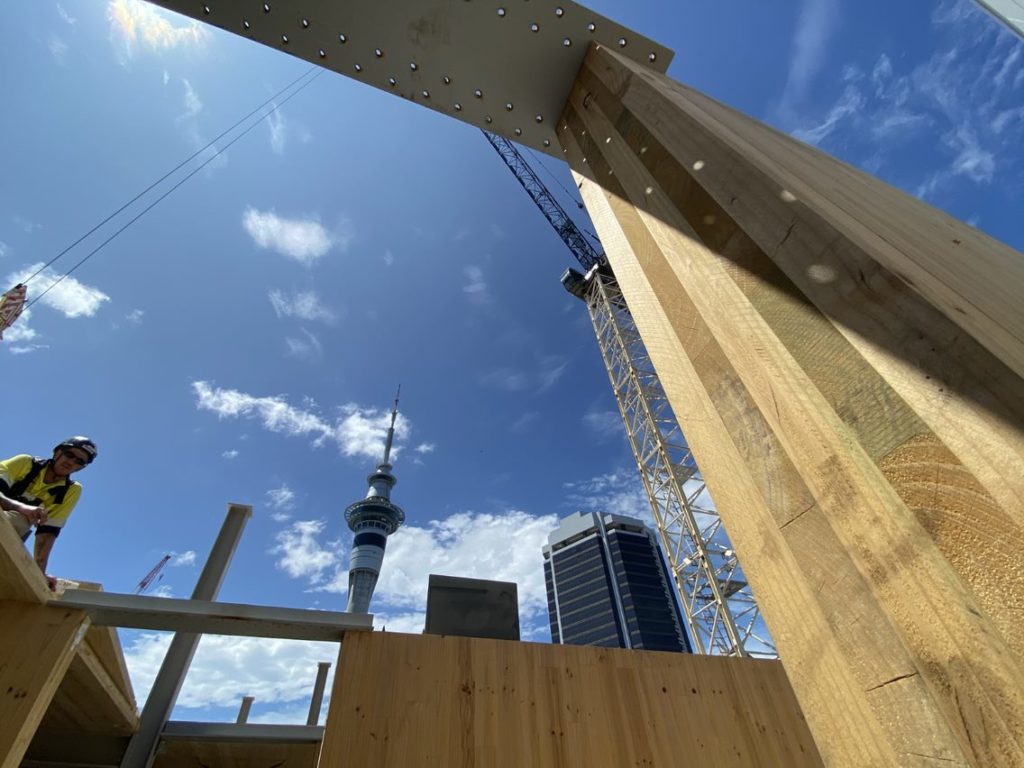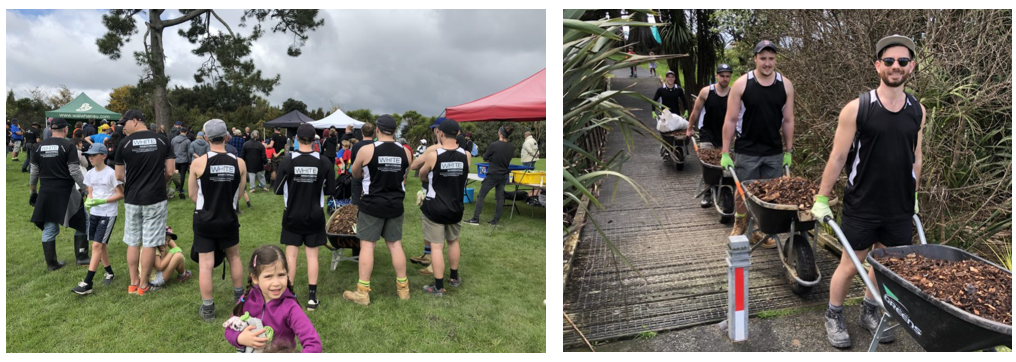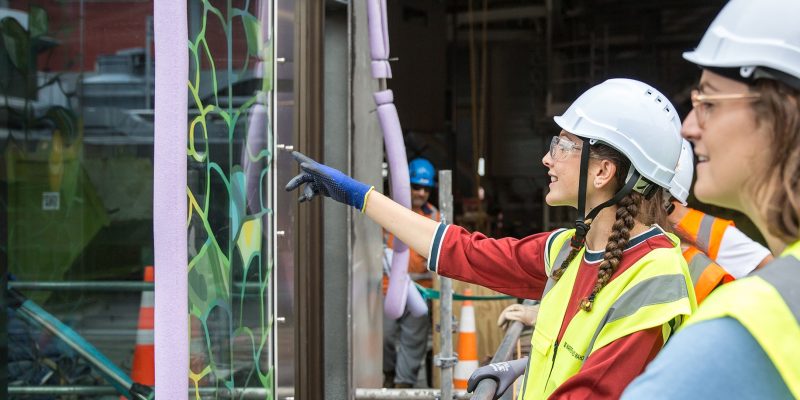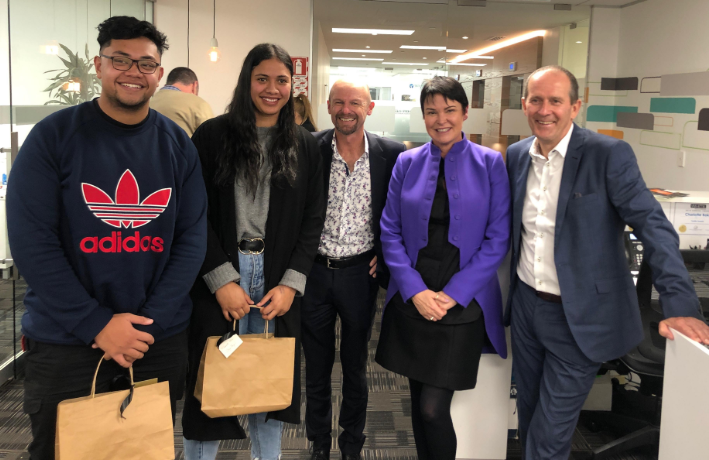Pioneering. Groundbreaking. Leading edge. These are often-overused words in the world of construction. However, in the case of Auckland City Mission HomeGround, they are not just an accurate, fair description of ambition in action, but they are the starting point for a truly impressive accomplishment emerging in the centre of Auckland.
All the way back in 2007, well before the dark days of the global financial crisis, the Auckland City Mission ran a design competition to create a new complex on its central-city Hobson Street site. Won by Stevens Lawson Architects, a vision was born for not just a new multi-storey facility that would provide integrated wraparound services and accommodation for some of the city’s most vulnerable people, but for a structure that would be built in an entirely more sustainable manner.
Fast-forward thirteen years and the dream is now becoming reality. Work is well underway on site to build the nine-storey Auckland City Mission HomeGround, the tallest building to use cross-laminated timber for its core structural strength in New Zealand.
Since the earliest stages, White Associates has been intimately involved in this project that will house 80 apartments to provide safe, permanent shelter for people, a place where the Mission can support, share and connect with those who need it most. It will also offer low-cost medical treatment and prepare wholesome meals for visitors to its community centre. The new medical centre and pharmacy, being created as part of the project, will include a state-of-the-art 25-bed social and medical detox unit in conjunction with Auckland and Waitemata District Health Boards, increasing the service in central Auckland by 50% with space for 250 admissions and 1825 additional bed stays.
The project has involved a wide range of White Associates skillsets, from the estimating detail skills applied by Konrad Trankels and Justin Maritz, to the bank funding and pre-condition reports reviews undertaken by Darin Bayer, and the post-contract skills now being applied daily by Brett Zeiler and John Hugo McGrath. In short, it’s a full-court press as the team works to help the Mission to deliver this landmark project within an evolving, fundraising-driven budget.
As so often happens, with pioneering ambition comes complexity and challenge – and this project is not short of any of them. So, what are the biggest challenges here?
Brett Zeiler, who leads the post-contract quantity surveying work for White Associates on the project, says that they come in three main flavours: firsts, fire and funding.
Firsts
“Firstly, this project is one of the tallest timber building in New Zealand. It is revolutionary in its use of Cross Laminated Timber (CLT) on such a large scale. CLT is undoubtedly the answer to building sustainably, adding value to a natural, renewable resource through technology – as well as fast, safe, economical and good for the planet. However, as anyone who has been on a construction site knows, when a new material or method is introduced to site it adds dimensions of uncertainty and risk. All of these can add time and cost to a project.
“It is true that the timber product, which is being supplied by XLam, has been used on numerous smaller projects around New Zealand, but it has never been used in a project of this size or in this part of the city. Because the structure above Level 2 is being made out of timber, the team has had to put some serious time and effort into understanding it, with many meetings with XLam to gain specialist knowledge of the system and the construction methodology.”
“Now, however, as the build progresses the team are getting to know the product and the system, we are beginning to understand it and become more comfortable with it. It is good to watch the installation team getting into their rhythm on site, it is becoming clear that they too are becoming confident with the methodology involved. That has been a real highlight of the project for me; being exposed to it, how it works, how it affects different elements of design, architecture, and seeing how the consultancy team have dealt with all of the new systems involved.”
CLT designed buildings have been at the forefront of design in recent years across Australia however New Zealand’s unique Volcanic landscape has meant that a more cautious approach has been taken hence the landmark status of this project. The understanding of the seismic requirements in a timber structure of this size in a country with a known earthquake risk has meant that the engineers have had to pioneer their way to a solution.
Fire
Fire rating requirements were a related challenge, says John-Hugo McGrath, who works daily on the project.
“One of the major elements was gaining an understanding of how the key requirements for the timber structure differed from the conventional steel and concrete, a part of this involved understanding how Council was treating the fire design and the implications their calculations had on the design and in turn cost.
“To address the challenge, we went through the design options and reviewed the acceptable solutions, we then carried out a cost analysis on the viable options and presented the most cost-effective options to the team. Knowing the options we had to work with allowed the consultancy team and the contractor to identify which option presented the most favourable methodology thus resulting in a solution that was the most cost and time effective for the client”.
The process involved considerable interaction with the Fire engineers and the Architects, he says.
“We worked through numerous options and gained valuable insight into the inner workings of the fire requirements with a CLT system, we reached the right solution with the team and have overcome what was definitely a hurdle at one stage.”
Funding and Project cashflow
One of the continual challenges on a project that continues to involve significant public fundraising is cashflow funding, says Brett.
“The Mission has undertaken fundraising for different aspect of the project from the general public and grants from DHBs, council and government. This means that from a QS perspective we need to isolate costs from the medical/detox floors and relate them back to grants for specific works.
“There’s no doubt that it has been more complicated with multiple sources of funding, as we need to show that funds are being used for their intended purposes. We have therefore been through a process to work alongside the contractor, so as we get prices in for trades, we can split out the required levels of cost. This has involved significant collaboration with the contractor to extrapolate the required information and present it clearly. Our bank funding team has been extremely helpful in all of this work, which has run since the estimating phase through to now.”

“By doing this we have been able to ensure the Mission is in a position to understand their donation targets and push donation drives to guarantee they have the capital to cover for upcoming payments as and when they are due”.
Procurement
The procurement process has been another key process within this project, adds John Hugo.
“To gain an early start we tendered a P&G Margin contract to get a contractor on board, and then tendered trade packages until we had a 60% lump sum before commencing on site. This was a fairly unique process but was used out of necessity. Since then we have been working on an open book basis to procure the remaining 40% of trades as and when the design has progressed”
The open book basis has allowed us to ensure the contractor has obtained competitive market pricing on each trade through the tender process. “The number of moving parts involved in this process has meant that we have had to reassure the client and provide them with confidence of an accurate forecast cost as we progress through the trades”.
A collaborative approach with the contractor has meant the team has had the ability to engage with the trades and provide a more in-depth oversight throughout the entire process to ensure the trade prices are in line with expectations and represent a value for money.
Value first
Speaking of value, Brett adds, Value engineering has also played a significant part of White Associates’ role.
“Understanding the purpose of the building and nature of the client – being a charity organisation, it made sense that the design was fit for purpose. Given we are dealing with public money and donations, we have worked on a real value engineering drive, focusing on targeting a level of spec in the building that is appropriate for its intended uses, prioritising durability, longevity, things that will last, always being cost-conscious. That said, we don’t want to be penny-wise, pound foolish; we have been targeting the right cost for the right design life.”
The procurement nature of the project has allowed us insight into the design at a stage where we have been able to review and provide cost conscious alternatives to the client and engage in active talks with the Contractor as to how to better the buildability which ultimately results in cost savings.
This cost-focused and innovative approach to design, materials, procurement, methodology and funding has required a solid and collaborative team, he adds.
“The team has been really good. Everyone from the architects to the engineers understands what we are working on and why it is important. This has kept the Mission and the project’s outcome at the forefront of every meeting. We can all see that coming through in the way people are working, ultimately focused on the benefit this project will bring to the people who will live there as well as the Mission’s staff and volunteers.”
Focused on the future
The team is now working cohesively towards the end goal, with everyone focused on the same objectives, says Brett.
“Morale is great, and we applaud the Auckland City Mission for being the first to take the sustainable path forward. They are paving the way, providing lessons to be learnt so other people can follow. It is great that they have taken the initiative, and it is great to be part of the process.”
John-Hugo agrees.
“The design is pretty amazing. Knowing that it is made out of a pioneering technology gives us all a strong feel-good factor, knowing we are contributing to something that will serve people, and that they will be grateful for it. The project will make a truly meaningful impact; it’s not a tiny house, it’s a nine-storey building. It will make a big difference.”
Find out more about HomeGround here >>




